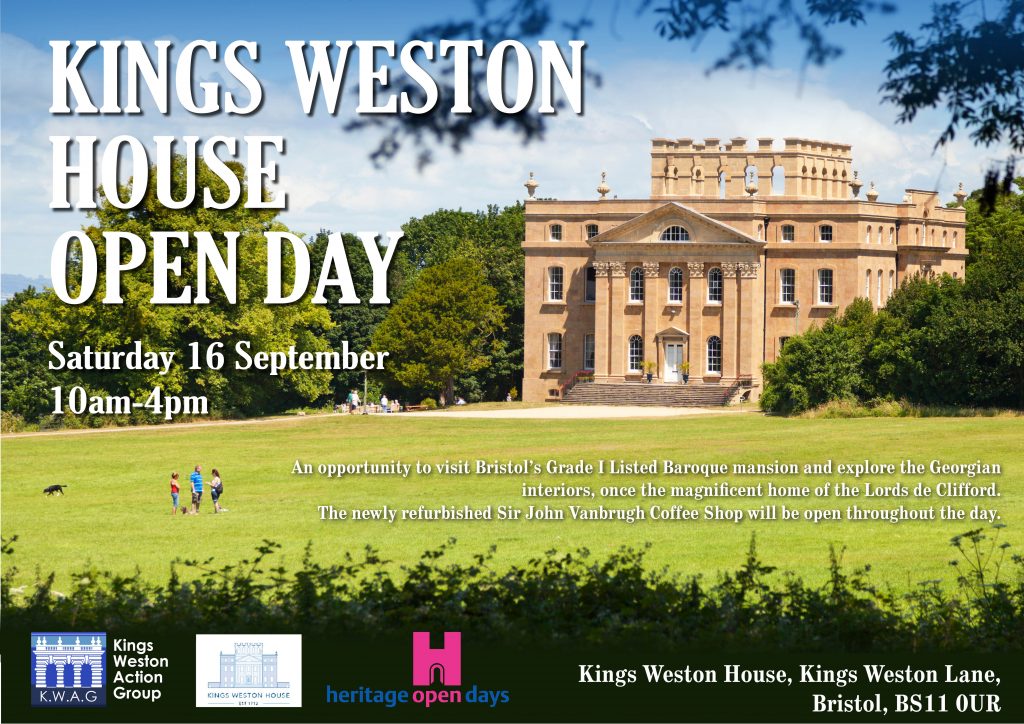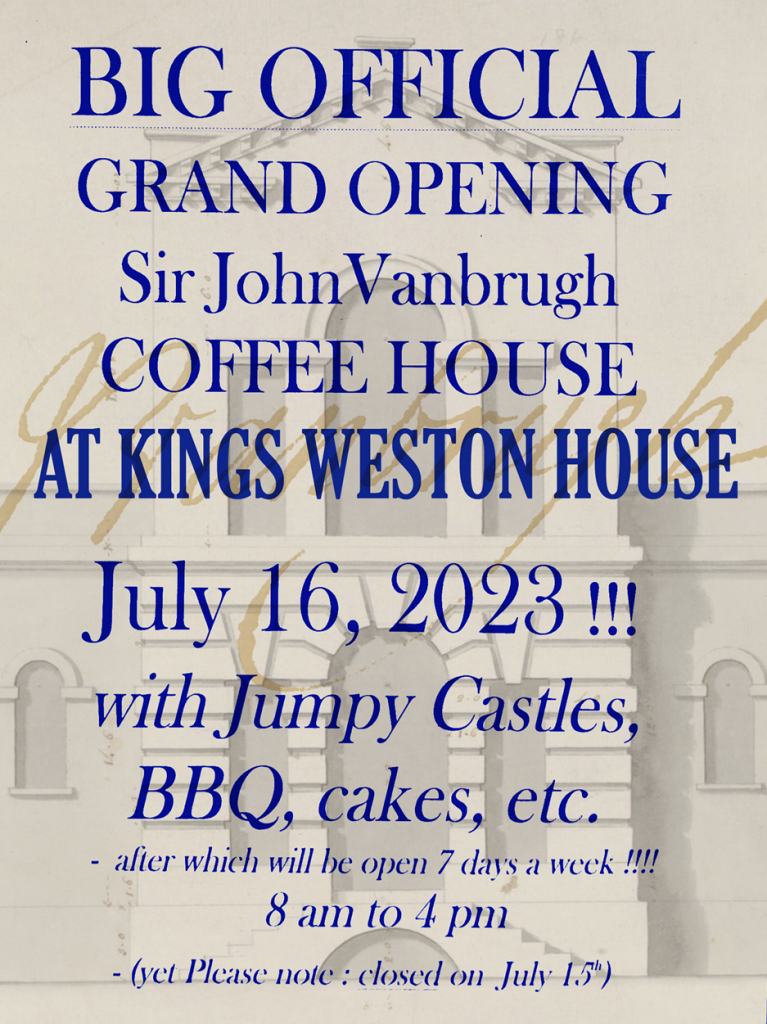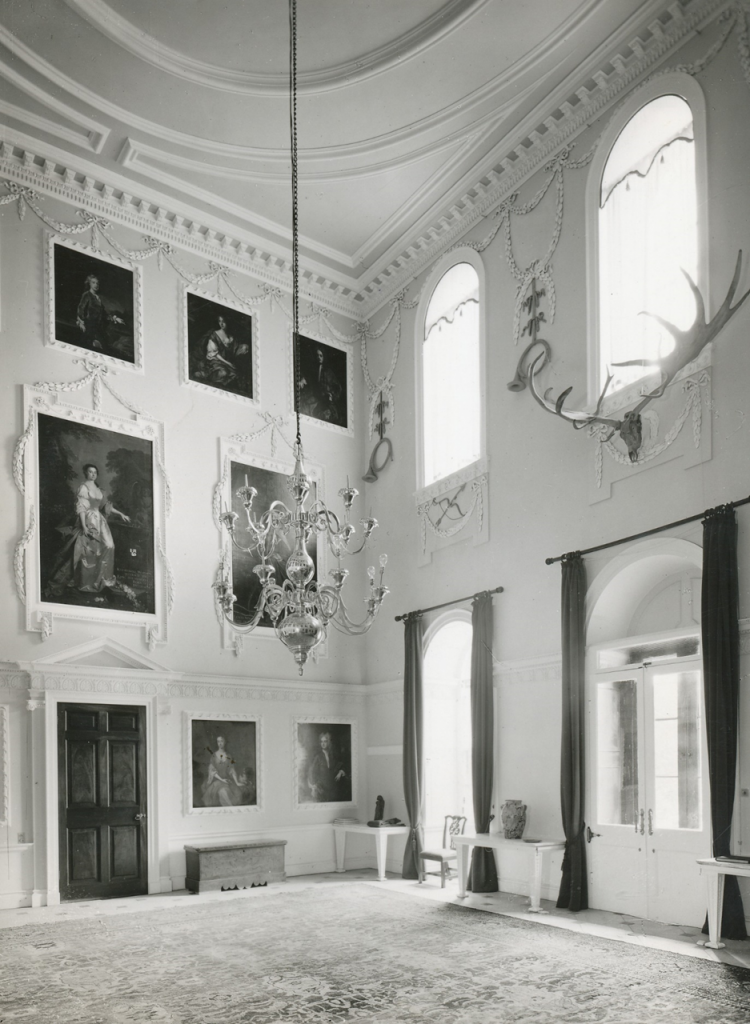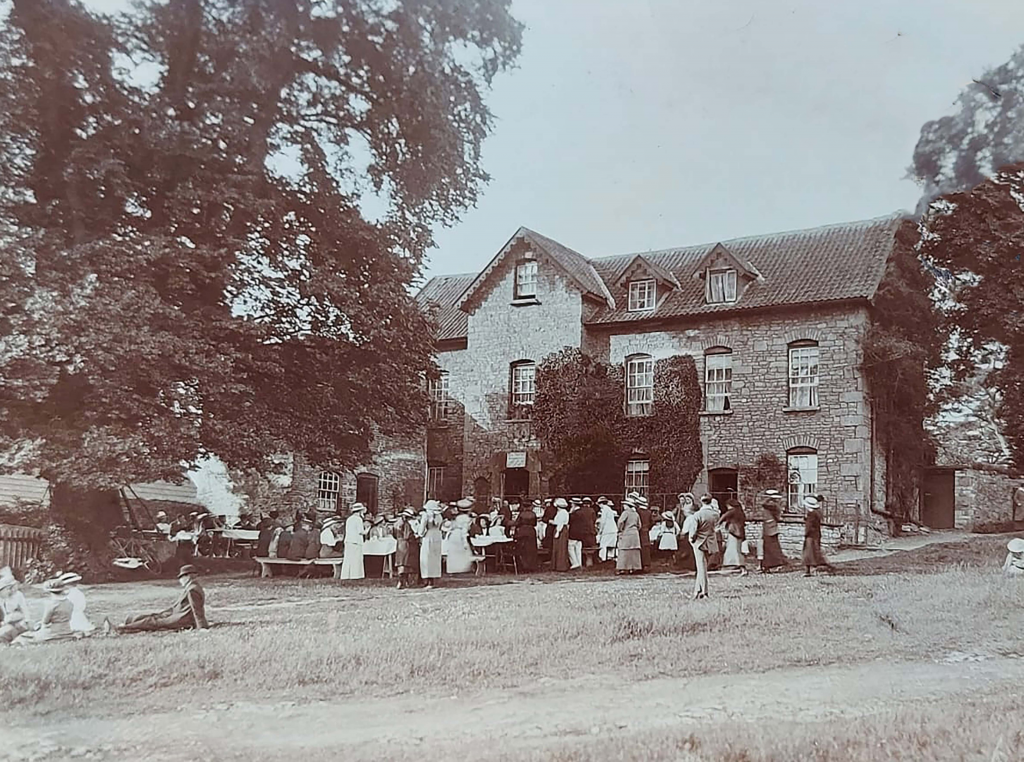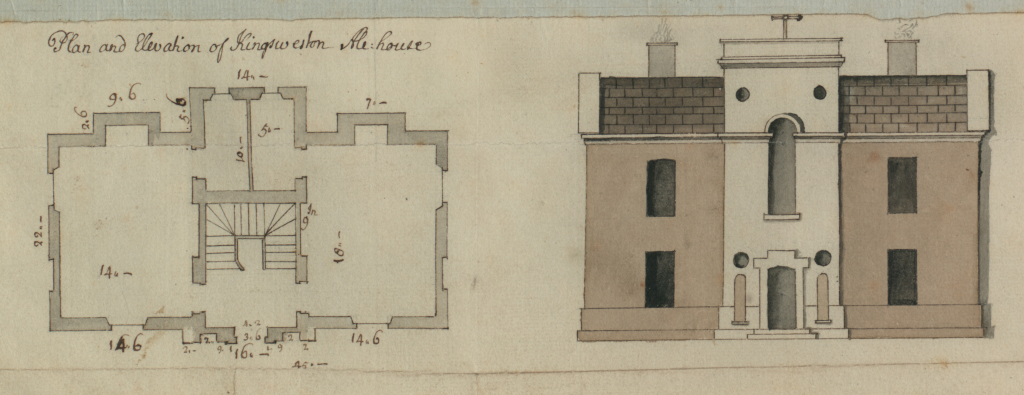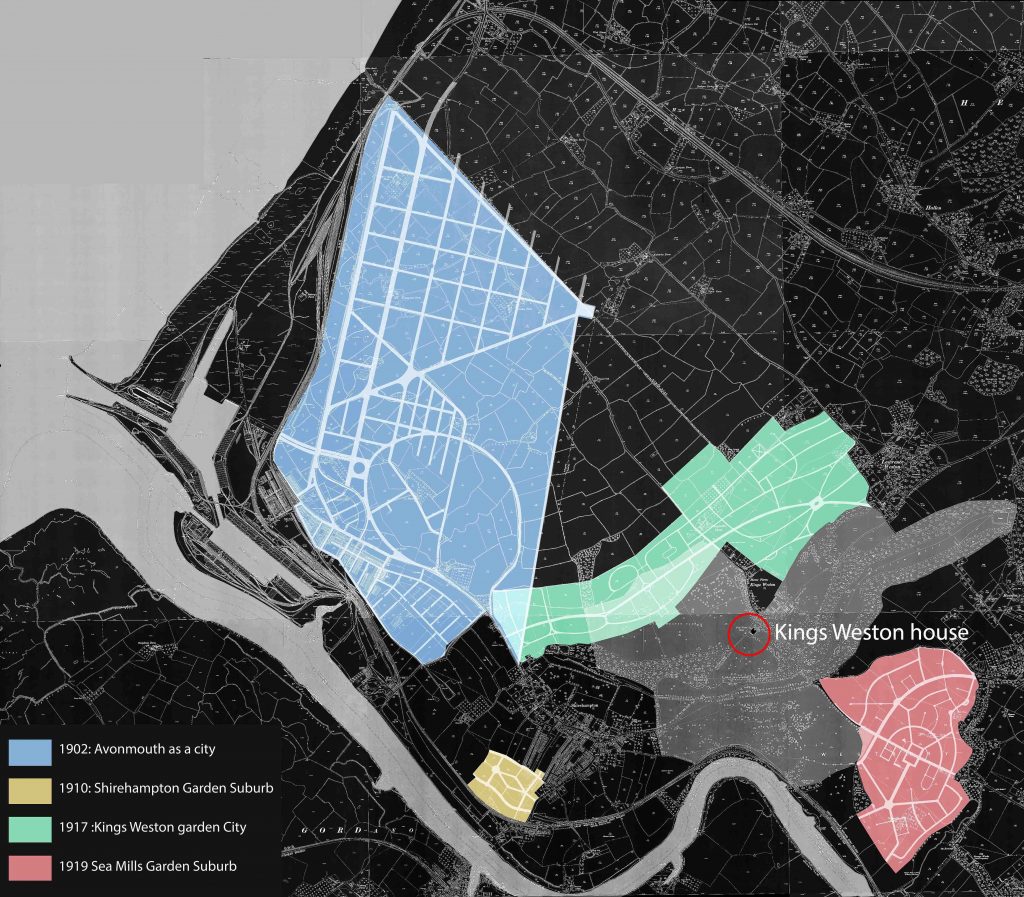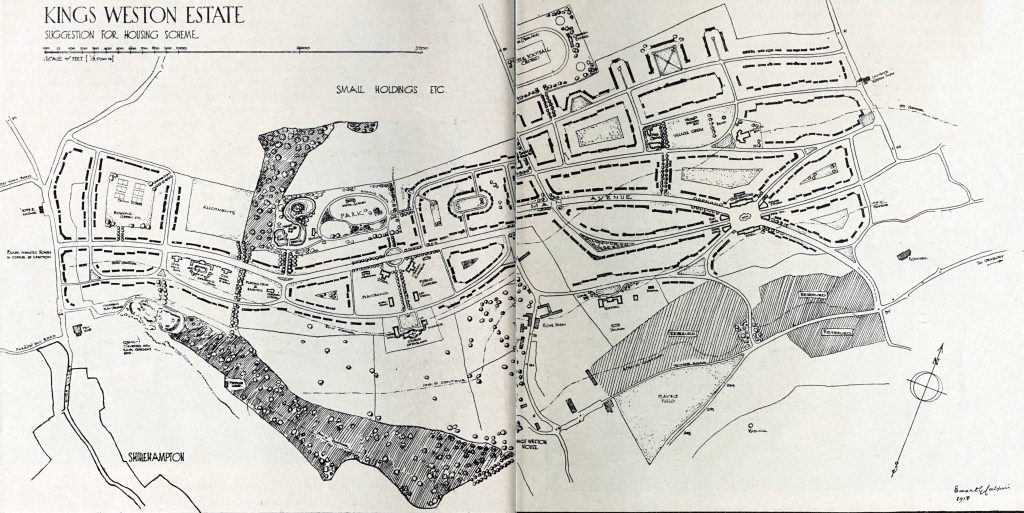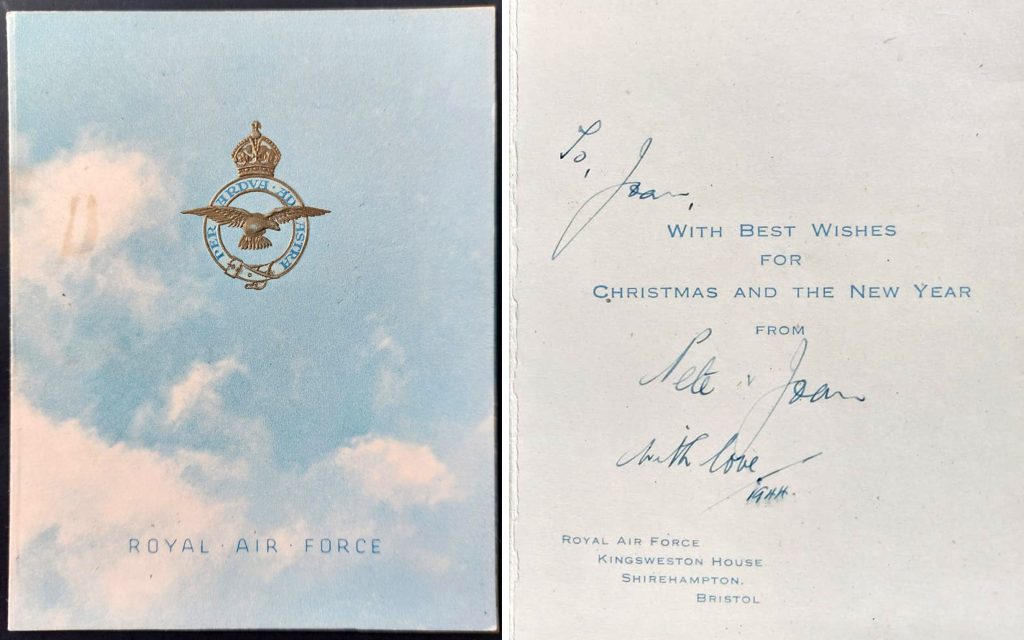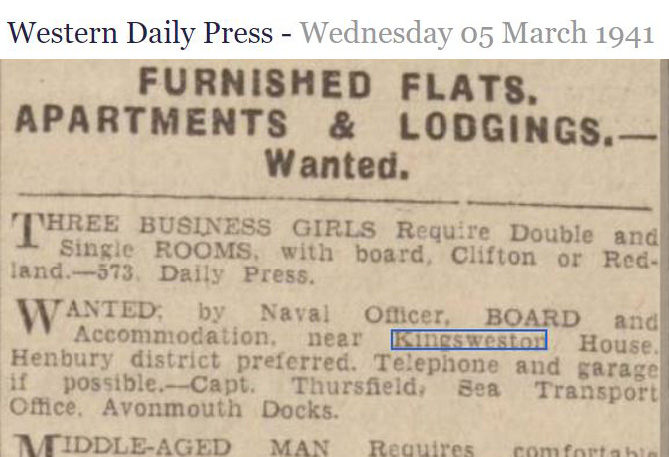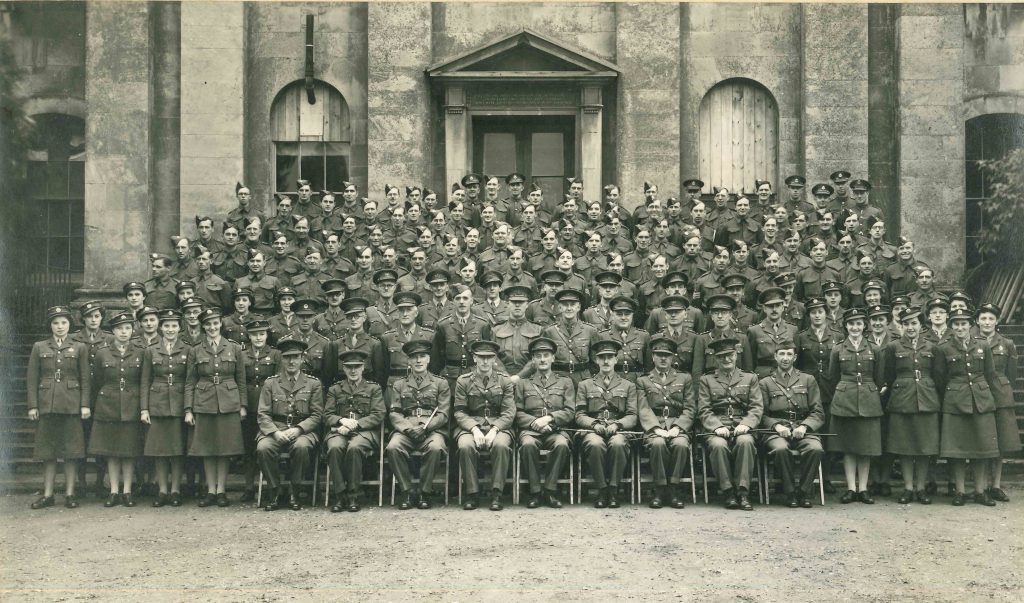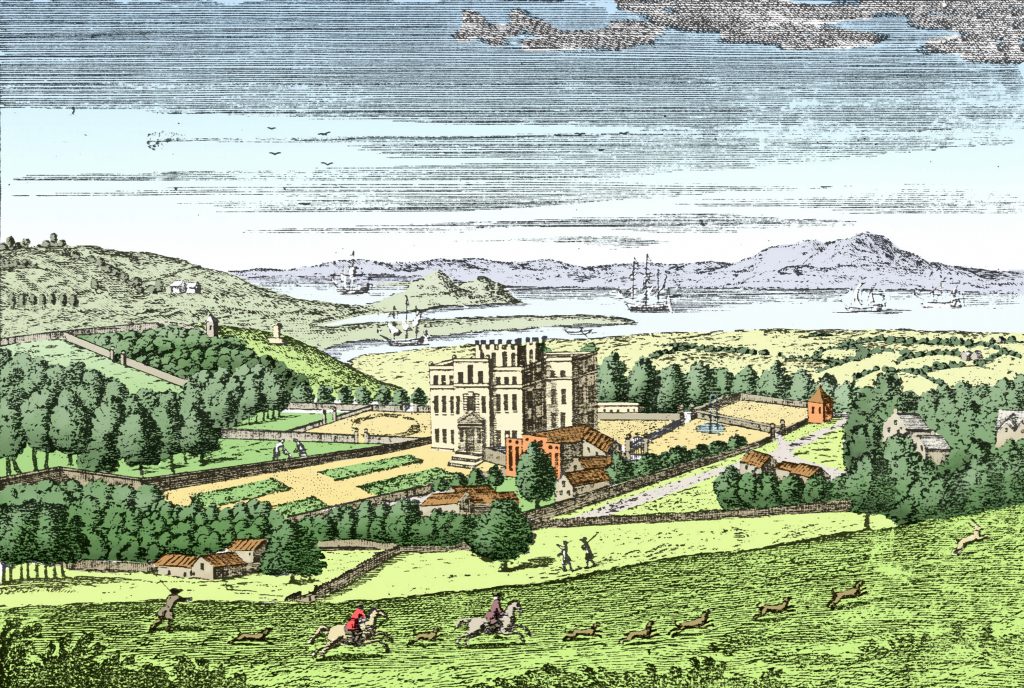Way back in 2013 KWAG made contact with the John Russell, 27th Baron de Clifford, ancestor of the Southwell family. Initially we were most keen to record a number of paintings the family possessed, those which once hung at Kings Weston before the last member of the direct lineage died in 1832, but the family were eager to show us a large collection of documents too. We were delighted to be able to arrange for these to be transferred to Bristol Archives on their behalf, and were privileged to be able to review them before they were added to the city’s collections.
There was a much of interest to Kings Weston, perhaps nothing more so than a fascinating series of letters written from Katherine Southwell to her son, Edward Southwell, whom she affectionately called Ned, the third of the family to carry that name at Kings Weston. We know Katherine today through a glorious portrait of her that still hangs at Kings Weston house. Painted by Allan Ramsay in 1740, it faces her husband across the hall where they were installed there by her son shortly after her death in 1765; indeed the whole of the portrait gallery may have been designed as much to memorialise her as the rest of the family.
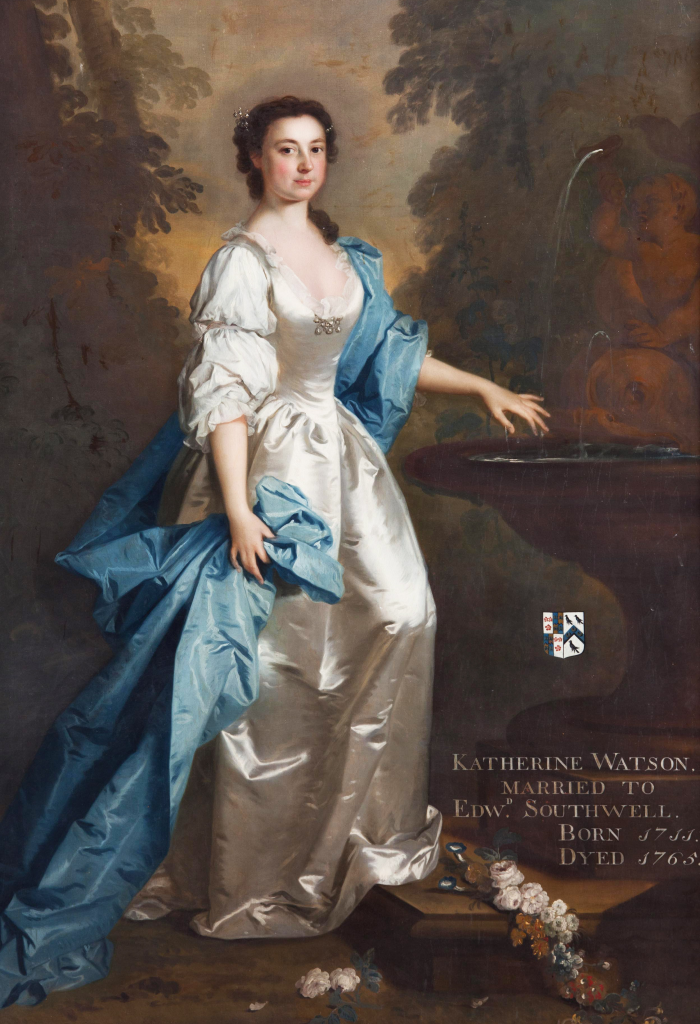
Katherine and Ned’s father, also Edward, appear to have had difficulty in conceiving, the young heir not being born until nine years into their marriage. Another child, a daughter also named Katherine, died but ten years old, and perhaps a second son may never have survived infancy. Edward Senior died in 1755 leaving his wife and son alone. It is perhaps in this context that Katherine’s affections for her surviving son were so great.
The letters between mother and son begin in 1749, but climax after 1758, the year that Ned left for the Grand Tour of Europe, an essential component in the life of any young man of means at the time. Ned, then aged 20, left behind his 48 year old mother with few friends and family members around her. The parting was keenly felt by her, and the ensuing stream of letters that followed his departure exudes that affection and care felt for her son, but also the eagerness for him to improve himself and kindle ambition.
Throughout Ned’s three year tour of Europe his mother sent letters, each one was carefully preserved by Edward on his travels and returned with him to the country, testament that his affection matched that of his mother. The majority survive today, though sadly there are notable gaps, where batches of correspondence appear to have been lost to time. It’s also unfortunate that we don’t have a reciprocal collection of Edward’s writings to make full sense of Katherine’s letters, but this doesn’t dim their colourful and engaging insight into mid-18th Century life. In them she updates her son on the global political situation, intermixed with “tittle-tattle” and gossip, encouraging words, and descriptions of her own exploits. Her search for a suitable new home to act as a Dower house is also a regular feature of her letters. Moreover, the letters are an incredible insight into Kings Weston, the gardens and staff employed there, and the comings and goings of tenants, neighbours, and livestock long-known to them both.
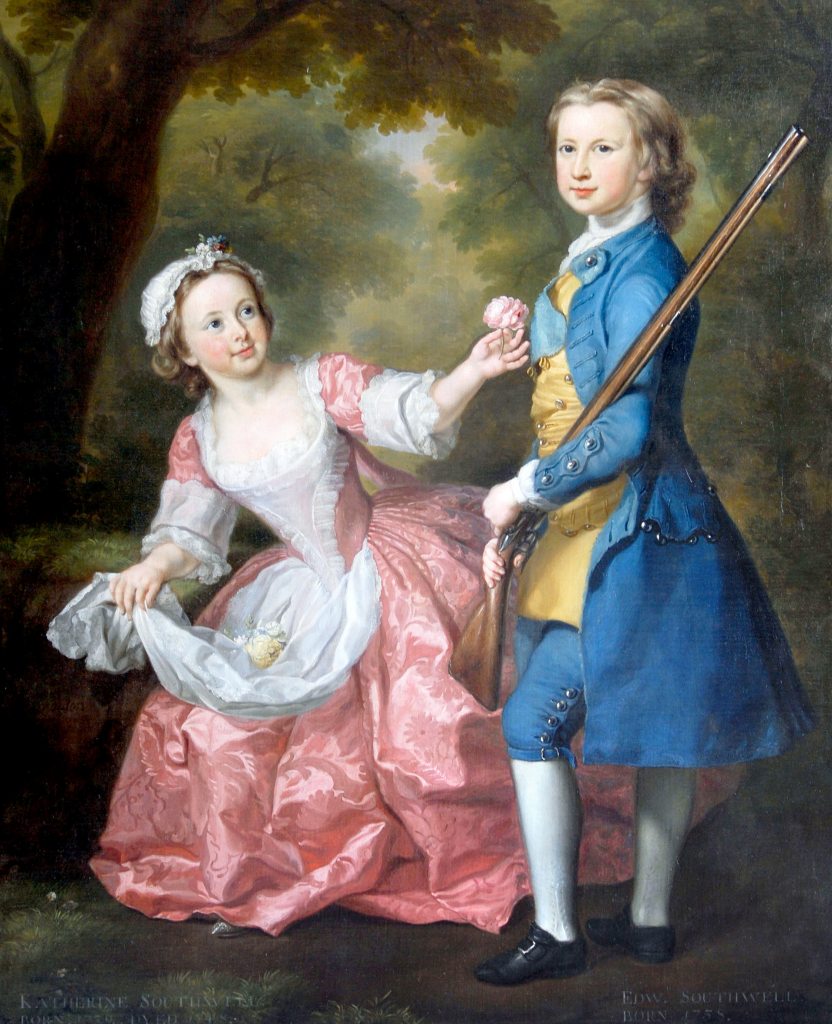
In Ned’s absence, Katherine spent time at Kings Weston, working with the head gardener, Gould, and the estate manager, Nicholls, carrying out her son’s instructions. Sometimes she is at the centre of the action, actively out in all weathers assisting in planting trees, and other times an observer, sending on vivid descriptions of the flourishing parkland. She wrote:
“I got hither to dinner yesterday, and was lucky in having good weather, and took the advantage of a very fine afternoon, to visit your plantations in the quarries, who thrive very well and are very clean, as is the garden; nay even the park is more free from nettles than usual; a prodigious quantity of grass and bullocks and sheep fatting on it; your colt frisking about very gay and for what I know very fine ones; ………I live on the hope of once more enjoying you all together and let the intermediate space run on as it can.”
Kingsweston, 27 Sept. 1758.
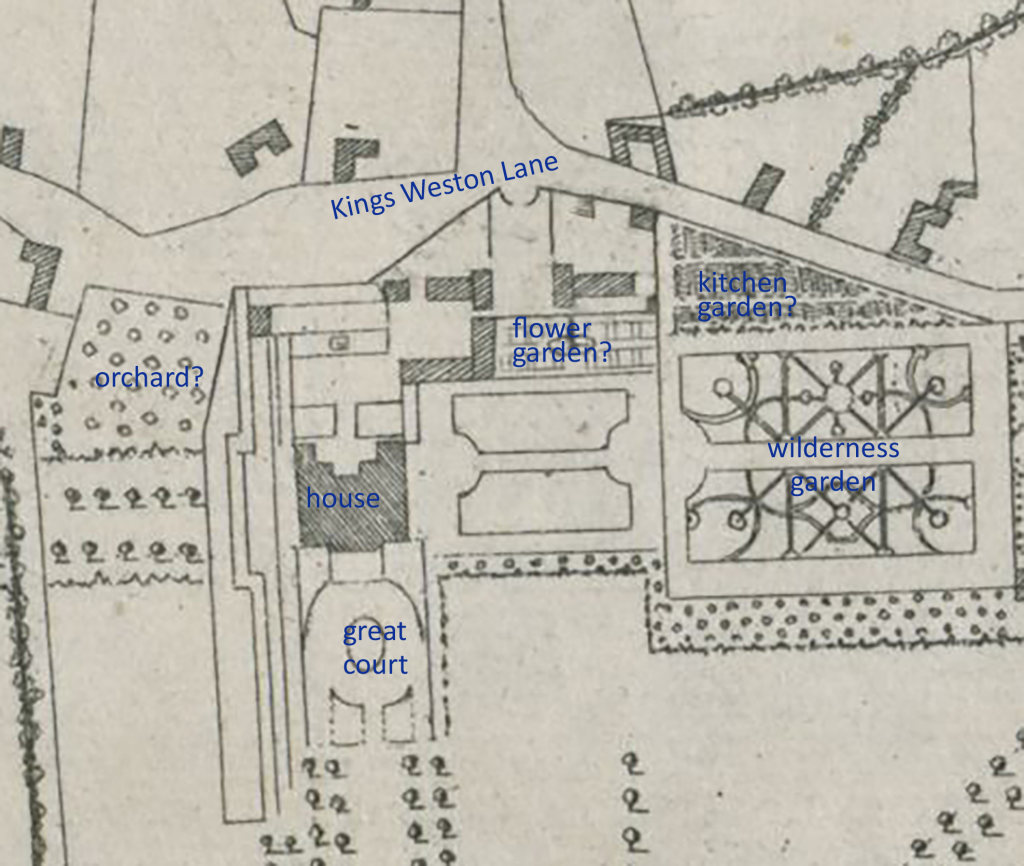
And soon after:
“Having no letter of’ yours, my dear Ned to answer, and having had no visitor but Mr, Berrow this can bring you no news but of the mute and vegetable part of the creation. To begin then your serpentine plantation at the bottom of Penpole looks much less like a snake than it used to do, the trees in general are flourishing and, the laurels almost cover the wall; it is extremely clean and has been twice sow’d this year, once with turnips and once with fetches.
The quarries have lost but few trees, but the hares and the lambs have crept under the rails and nibbled some, out. I find they took good care to keep them out as soon as they perceived it for ‘tis very little damage that is done.
The old kitchen garden is transformed into a nursery, but Gould cou’d not entirely part with the sparrowgrass (asparagus) beds, so has planted only between them, but the want’ of room this year will force him to quit his beloved.
There’s a fine parcel of young things of last year’s sowing in the flower garden, viz beach, swamp oak, Weymouth pines, cyprus, holly, laurel and some larch.
Now for my own particular friend the tulip trees that were removed are in health the arbutus are full of fruit and the two small magnolias are alive, but, alas, the great one is dead but what is still a greater misfortune to me, some Dutch sailors stole Jewel (a horse) but the day before I came.”
Kingsweston, 1 Oct. 1758.
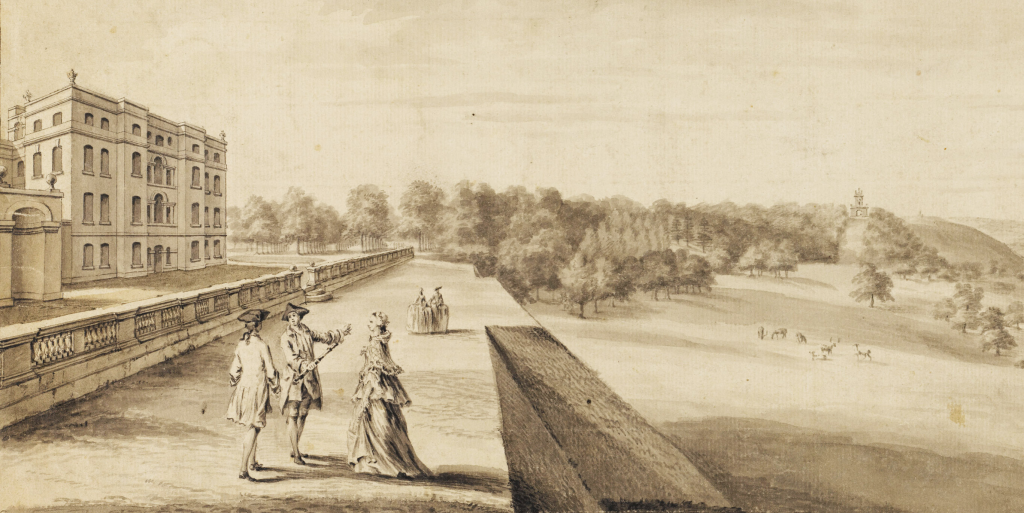
Throughout his time away, Ned was replanning his estate. Katherine writes frequently about floor plans and elevations of the house being sent out to him in Europe with her letters; evidently there were plans being sent back to her and Nicholls too, and schemes which she intimates were significant in ambition. A plan for firing bricks and setting out new kitchen gardens was already in train in 1758. These plans would finally come to fruition after 1762, with the stables and walled garden complex on modern Napier Miles Road being begun; indeed, brick was made extensive use of in these walls.
“Gould advises you to make bricks for the kitchen garden wall; he says there’s earth fit for it, and ‘twill save a great deal, for they are very dear here; send me word if I shall begin; the earth must be dug six months before ’tis worked”
(Kingsweston, 1 Nov. 1758)
And later:
“My dear Ned,
I have sent you by Mr. Gaussin, Gould’s plan for the house and garden; l don’t imagine ‘tis quite the design you will follow, but as the ground is regularly measured and marked, I hope ‘twill give you some amusement.”
“…I come now to yours of 30 Dec. I have sent you, Gould’s plan, it is not so extensive as your: scheme, tho’ it does take in some of the road.”
(Spring Gardens) 23 Jan. 1759.
“I am in a fright about the bricks; for as that was not Nicholls’s own proposal, I find he does not approve of it, and make great puzzling and difficulties and works, so unintelligibly about it, that I don’t know what he is doing.”
In this letter Katherine implies that the line of a road, probably part of Kingsweston Lane, is included. That may have been the southern end that now faces onto the side of Kings Weston inn cottages, but before then looks from maps to have been aligned further to the west. Katherine eventually settled on a house at Westhorpe, Little Marlow, which she figured would be convenient for her son to drop in on between the family’s town house at Spring gardens and Kings Weston. Most of the letters after 1760 are written from her retirement there.
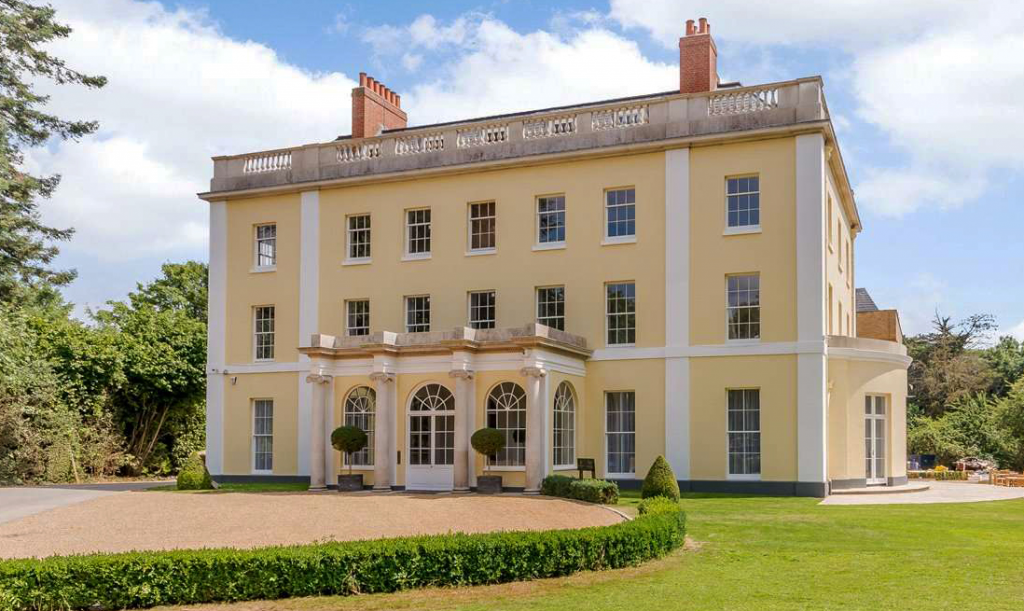
From 1759 Katherine leased the place as her Dower house. She agreed to buy the furniture already there, and a boat that she fancied Ned would enjoy using in the park’s lake. After his return to England in 1761, Ned quickly took works on the estate in hand. Unlike his father, who had been created Secretary of State for the Kingdom of Ireland by entail, he had no position in court or government, and sought to rebrand Kings Weston as a political powerhouse. With an ambition for a seat in Parliament, he set about modernising house and grounds as a statement of intent, as many of his peers had also done. His first task was to move the collection of old stables and kitchen gardens from a cramped position next to the house. Employing the architect Robert Mylne, a gentleman whom he’s believed to have met in Rome during the Tour, Ned began work quickly. It is perhaps not a surprise that he turned to his mother to lay the literal and metaphorical foundation of this political ambition.
“You are very ‘obliging in seeming to think what I have done at Kingsweston prospers; alas, ’twas so very little, that to me ‘tis not perceptible; I shou’d very gladly lay the first stone of any building projected by you for I have a great propensity to like your designs.”
3 May, 1762.
She appears to have had concerns over the height to which the garden walls were to be carried for she wrote later the same year:
“I honour your spirit and resolution, that has carried your walls up against all your ministry, but know that from this time forward you’ll be charged with every blight that falls on your trees and must never complain of unripe fruit, or backward pease, without being told you wou’d have the walls so high no sun can come into your garden.”
Westhorpe, 3 Sept. 1762

We had long believed that the landscape gardener Thomas Wright, the “Wizard of Durham” had worked at Kings Weston, but it is only through Katherine’s letters that this has been confirmed. Wright had been working nearby at Stoke Park on the other side of Bristol, but also for the Duke of Beaufort at Badminton. That he worked at Kings Weston too explains some of the landscaping introduced during the 1760s and the celebration of the quarries in Penpole Wood as rustic garden features.
“… I am glad you are agreeably detained and that Mr. Wright and you have not quarrelled. He must be a very odd creature for he has refused very advantageous offers from Lord Halifax to go with him to Ireland and prefers liberty tho’ joined to poverty. I don’t blame him for I think I shou’d do the same.
Saturday, 11 April. 1761 (Westhorpe?)
“I wish I could see your new designs with Wright but you will tell them me and they will shew better when executed”
Tuesday 8 April 1761 (Westhorpe?)
Wright probably advised on the deformalisation of the Kings Weston landscape, the thinning of avenues and grandiose architectural features in favour of a naturalistic pastoral landscape. It may have been his suggestion that resulted in the pulling down of the Great Court in front of the house. An important note from Katherine records the year this was planned:
“You are a lucky man, my dear Ned, to have nothing, to find fault with on your return home. I hope your perturbed spirit is at rest now, my dear Irishman and that you no longer overlook your works after ‘tis dark and before it is light. I shall find great fault when I come if the return wall to the parlour window is not down.”
Westhorpe, 22 Aug. 1762
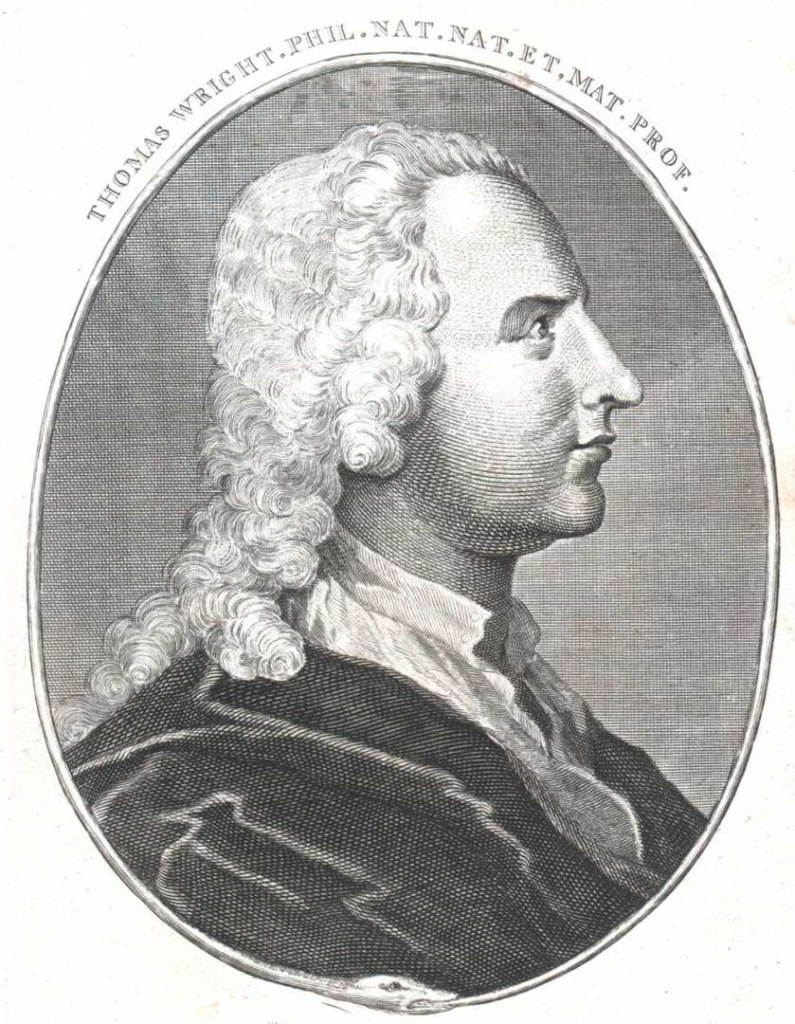
Katherine writes in an incredibly genuine and engaging manner, making her letters a joy to read. They are sometimes candid and amusing, whilst her campaign to resurrect the de Clifford Baronetcy in favour her son shows her as determined and intellectual. The total collection of around 200 letters is a vast trove of fascinating details on mid-Eighteenth Century life. We are only now transcribing the collection, possibly for future publication. The original letters are available free to view in Bristol Archives: Letters from Mrs Southwell to her son Edward (bristol.gov.uk)






